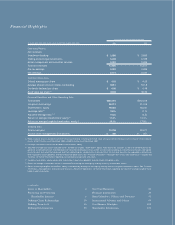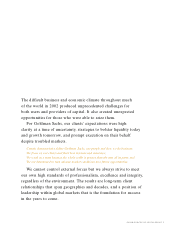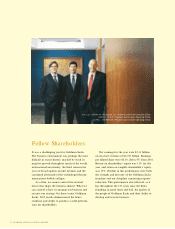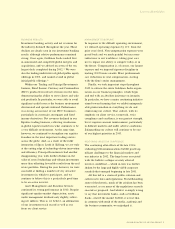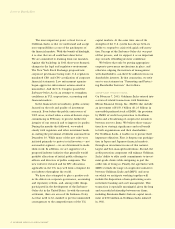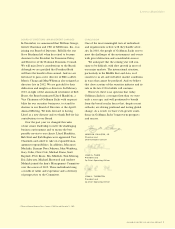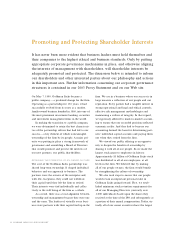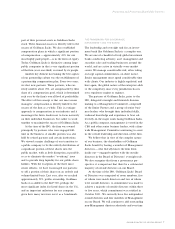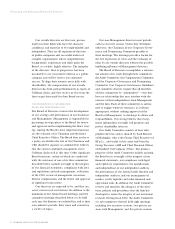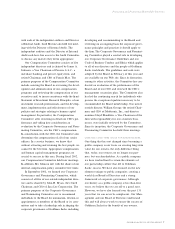Goldman Sachs 2002 Annual Report Download - page 8
Download and view the complete annual report
Please find page 8 of the 2002 Goldman Sachs annual report below. You can navigate through the pages in the report by either clicking on the pages listed below, or by using the keyword search tool below to find specific information within the annual report.
6GO LDMAN SA CH S 2002 A N N UA L R EPO RT
It has never been more evident that business leaders must hold themselves and
their companies to the highest ethical and business standards. Only by putting
appropriate corporate governance mechanisms in place, and otherwise aligning
the interests of management with shareholders, will shareholder interests be
adequately promoted and protected. The discussion below is intended to inform
our shareholders and other interested parties about our philosophy and actions
in this important area. Further information concerning our corporate governance
structures is contained in our 2003 Proxy Statement and on our Web site.
On May 7, 1999, Goldman Sachs became a
public company—a profound change for the firm.
Operating as a partnership for 130 years, it had
successfully evolved from its roots as a modest,
family-owned business founded in 1869, into one of
the most prominent investment banking, securities
and investment management firms in the world.
In making the transition to a public company,
we were determined to retain the best characteris-
tics of the partnership culture that had led to our
success—a key element of which is meaningful
ownership of the firm by its people. A major pri-
ority was putting in place a strong framework of
governance and assembling a Board of Directors
that would promote and protect the interests of
our new partners, our public shareholders.
RETAINING THE STRENGTHS OF AN OWNER CULTURE
The core of the Goldman Sachs partnership was
shared long-term ownership. It shaped individual
behavior and our approach to business. The
partners were the owners of the enterprise and,
with few exceptions, they could not withdraw
their capital until they left the firm or retired.
Their interests were tied individually and collec-
tively to the well being of the firm as a whole.
As a result, there was a total alignment between
ownership and management because they were one
and the same. The leaders of virtually every busi-
ness were partners with their capital tied up in the
firm. We are in a business where our success is in
large measure a reflection of our people and our
reputation. Every partner had a tangible interest in
strong operational and legal and ethical controls,
effective risk management methodologies and
maintaining a culture of integrity. In that regard,
we rigorously adhered to mark-to-market account-
ing to ensure that our recorded positions reflected
economic reality. And they had to because our
accounting formed the basis for determining part-
ners’ individual capital accounts and paying them
out when they retired from the firm.
We viewed our public offering as an opportu-
nity to deepen the benefits of ownership by
sharing it with all of our people. So we made the
largest stock grant to employees in history.
Approximately $5 billion of Goldman Sachs stock
was distributed to all of our employees, at all
levels in the firm. We believed that by making
all of our people owners, the firm would benefit
by strengthening the culture of ownership.
We also took steps to ensure that our people
would retain an important personal stake in
Goldman Sachs going forward. First, we estab-
lished minimum stock retention requirements for
all of our Managing Directors (currently over
1,000 individuals) based upon the shares they
received at the time of the IPO and subsequently as
a portion of their annual compensation. Today, vir-
tually all of our senior executives have the largest
Promoting and Protecting Shareholder Interests


